The Sinclair C5 came in a cardboard box delivered to your door. It was built in a Hoover washing machine factory and it was narrow enough to drive down your hallway. Which many people concluded was the best place for it.
This was a revolutionary affordable vehicle for the masses, or at least millionaire computer whizz Sir Clive Sinclair thought so. His qualifications for this forecast were founded on his successful launch of one of the earliest pocket calculators and the famous ZX Spectrum home computer.
Well, the Sinclair C5 was cheap compared to a normal car of the 1980s, and it certainly looked different. But not in a good way.
An electric dream
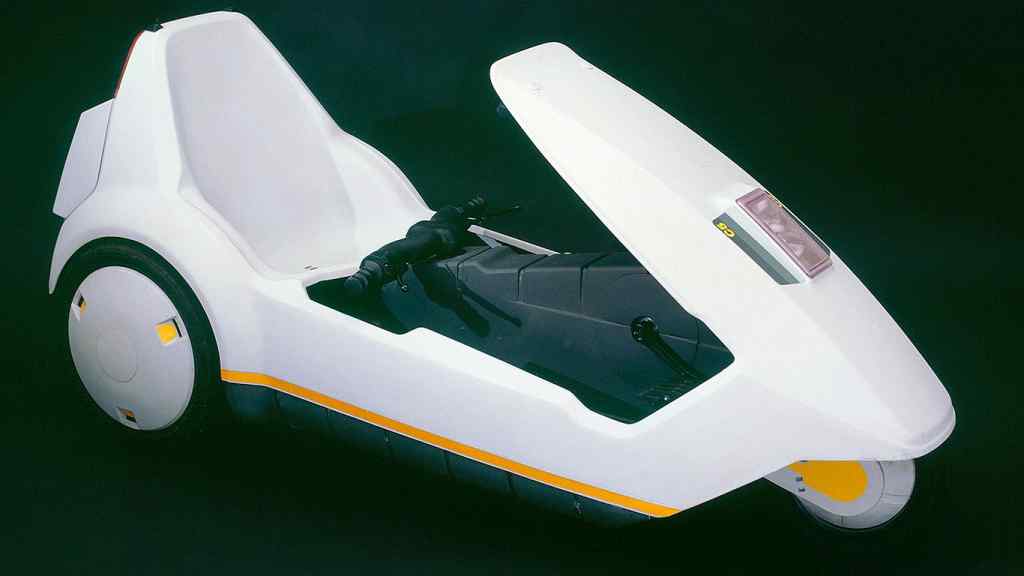
The C5’s emergence was the result of Sinclair’s long-running interest in electric cars, which led to the start of the C1 project in 1979. Sinclair asked a former Radionics colleague Tony Wood Rogers to be a consultant, and design specialists Ogle to style it.
Ogle subsequently revealed they never believed in the project, and their concentration on its aerodynamic properties – critical for an electric vehicle, even with the modest 30mph target top speed – resulted in an unhelpful weight gain that probably undid all the aerodynamic wins.
That made the C1’s 30-mile range a near-impossible goal, despite a lightweight polypropylene body built for one person.
Better than a moped?
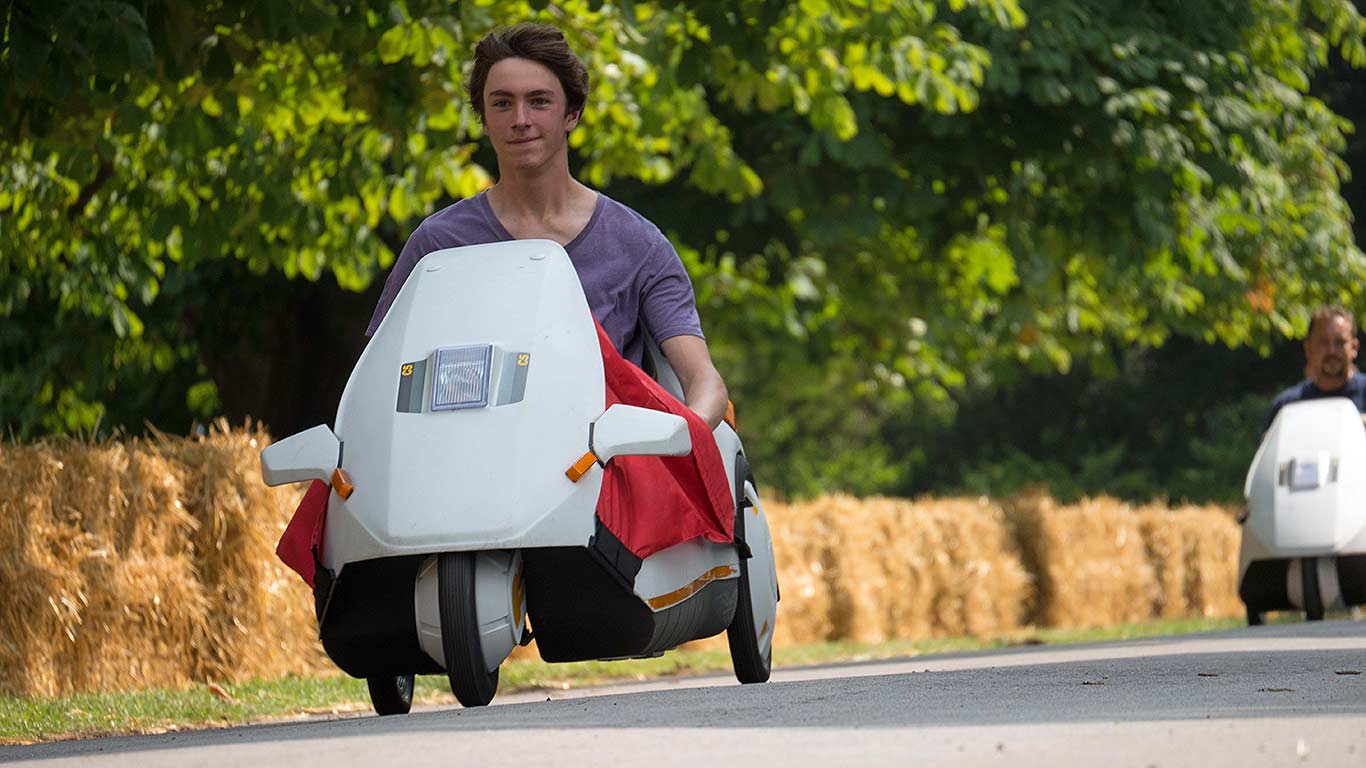
Sinclair’s aim was to build a better vehicle than a moped, and at a price vastly undercutting a conventional car. By spring 1983, however, he’d abandoned this project to raise more funds – undeterred by Ogle’s prophetic view that the C1 wouldn’t sell because its range was limited, it wasn’t weather-proof and it was too slow.
Sinclair raised £12 million by selling shares in Radionic, more than £8 million of it dedicated to the newly formed Sinclair Vehicles. Within months, the project was back on, and the Hoover domestic appliance company was contracted to build the vehicle, as Sinclair preferred to call it, at its Welsh factory.
The staggeringly optimistic production target was 8,000 C5s a week – a quantity to rival Ford cars at the time.
Engineering by Lotus
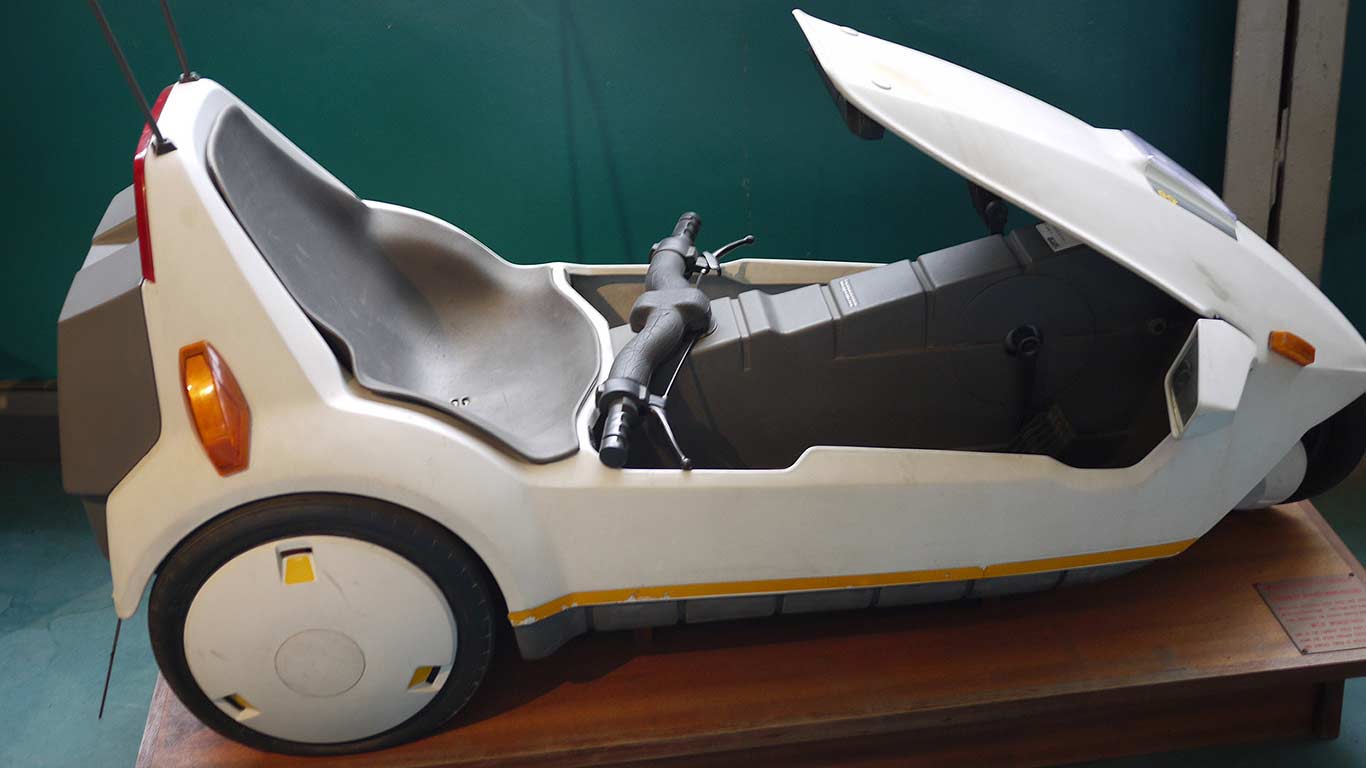
The project got a boost of sorts when the UK government introduced legislation, lobbied for by bicycle-maker Raleigh, that allowed electrically-assisted two- and three-wheelers onto UK roads. However, they were only permitted to reach speeds up to 15mph.
Also, the electric motor could only produce 250 watts, and the vehicle had to weigh no more than 60kg. All three rules had an unhelpful impact on Sinclair’s motor-assisted recumbent tricycle.
Within these limits, though, it was well-engineered, with Lotus hired to develop the C5 from Wood Rogers’ prototype. Like a Lotus, it had a backbone steel chassis and a welded composite two-piece body. And it was built down to a weight.
An electric fan motor powered a single speed, belt-driven gearbox and it was steered by handlebars that lay below you, where they were easy and relaxing to reach, an ingenious solution devised by Wood Rogers.
Powered by people
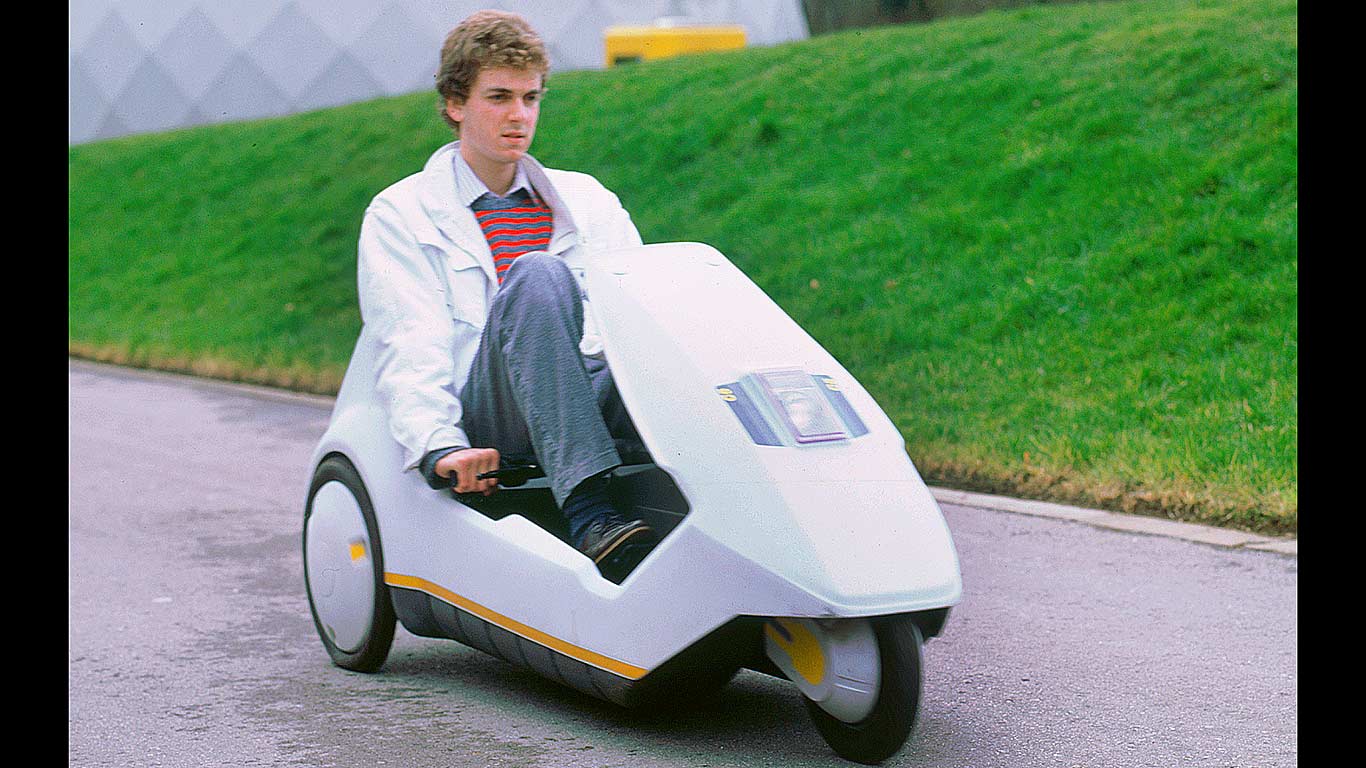
But the main source of drive was not so much the motor as the driver, using the Sinclair’s big, square pedals. The C5 was simply a tricycle with a part-time 12-volt motor, and it should have been sold that way to avoid disappointment. Still, marketing it as a tricycle would never have scored the colossal publicity that came its way because it was presented as a car.
Spin it any way you like, but the Sinclair C5 launch was a disaster. Problem one was that it took place on January 10 1985, the cold weather not only reducing the range of its puny 12-volt battery, but also treating the assembled hacks to the shivering reality of pedalling a C5 in the cold, wind and rain.
Problem two was the location. North London’s Alexandra Palace is an attractive venue, partly because it’s built on a hill. But it didn’t take long for the journalists, serial long-lunchers among them, to discover one of the C5’s many problems.
Hill-climbing often overloaded the motor to the point of cut-out – a state signalled by a forlorn electronic peeping – and when the motor wasn’t overworked a modest gradient would soon flatten the plastic trike’s battery. Some C5s didn’t decimate their batteries – but that was only because they didn’t work at all.
The orders came, but at nowhere near the rate needed to absorb the 8000-a-week torrent spilling from Hoover’s Merthyr Tydfil factory. Yet there was plenty of brave talk from Sinclair Vehicles on the fizzing interest in their £399 transport revolution, and how better weather would help sales.
Surging criticism for the C5
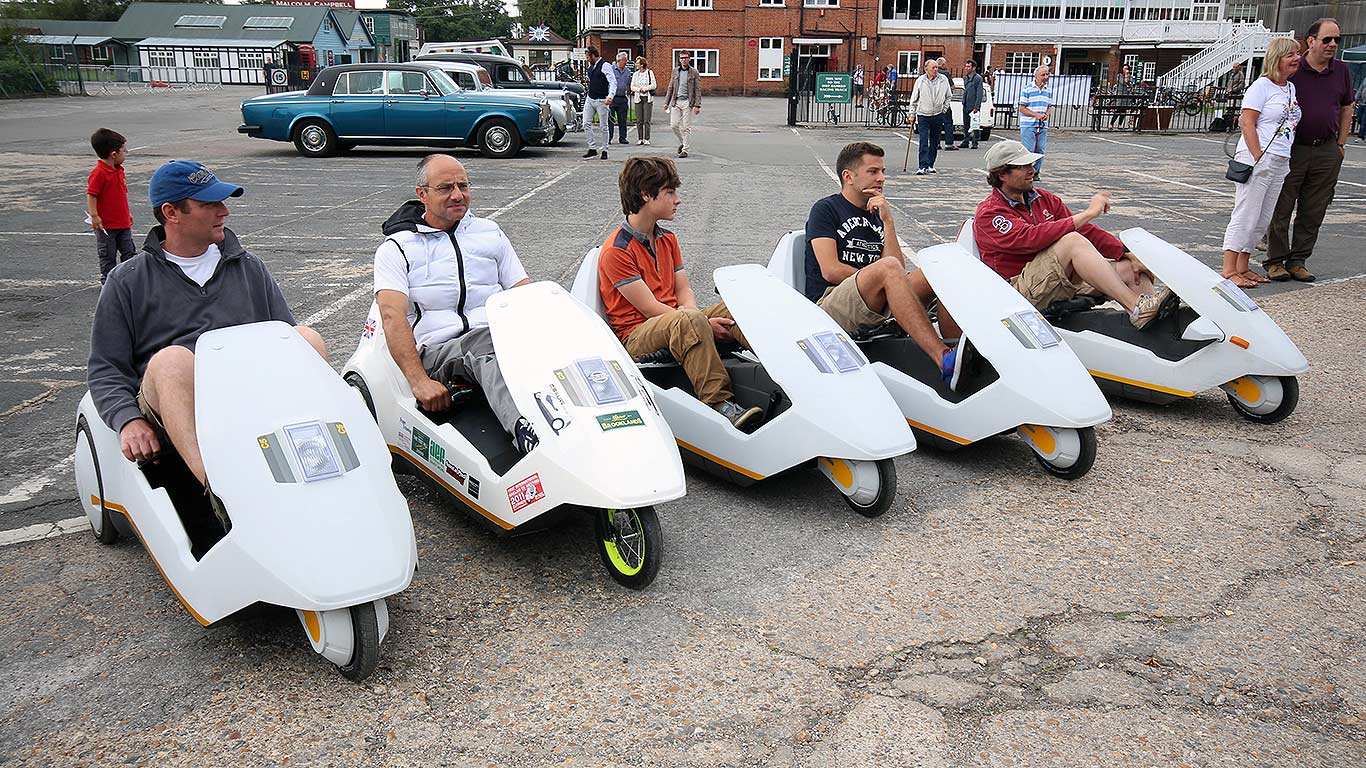
But it wasn’t enough to staunch the criticism. Testers found the electric range was more like 10 miles rather than the claimed 20, and less on a clement day. They felt hugely vulnerable on the road, a feeling undiminished by the optional high-visibility mast, which added to the deep feelings of foolishness that swept over anyone stepping into this pedal-powered plastic bath.
That was nothing to the embarrassment you’d feel at fitting – and wearing – the Sinclair’s wet-weather gear, though, which consisted of fabric panels covering its sides and your legs, and a matching hooded anorak. Putting all this on would have added another 15 minutes to your dismally slow journey, and made you feel almost as humiliated as a naked hotel guest trapped in a lift.
There was no heater – although you’d soon get warm pedalling when the motor stopped whining – there was no reverse gear and it had the turning circle of the trucks threatening to squash it.
Beautifully designed… in parts
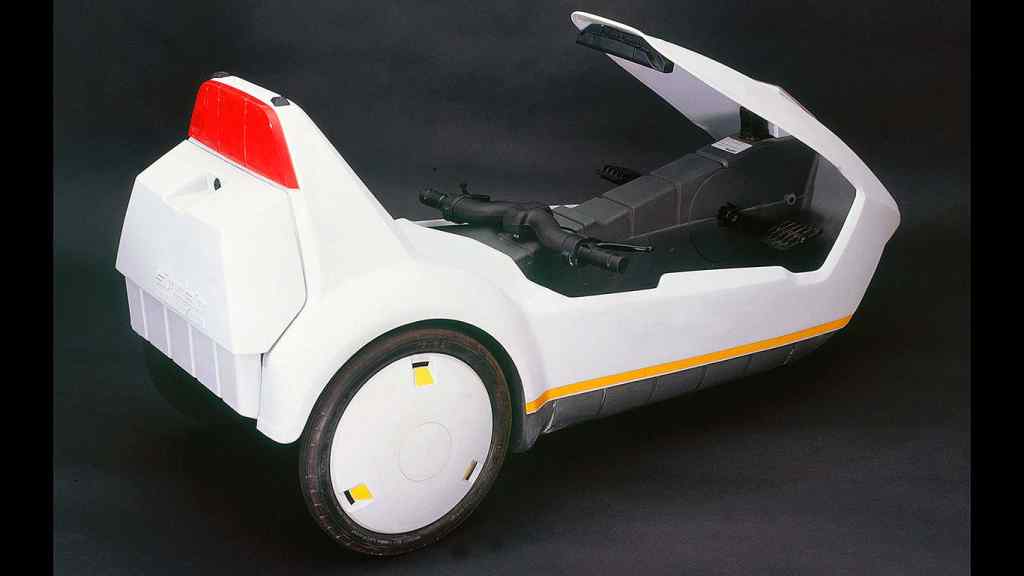
Examine the C5 in detail and you’ll spot some subtle industrial elegance. It wasn’t a beautiful design, but parts of it were beautifully designed. Gus Desbarats, a Royal College of Art graduate hired to style the C5, later described his contribution as “convert[ing] an ugly pointless device into a prettier, safer and more usable pointless device”.
Its pointlessness was proven by the fact that of the 14,000 produced – less than two weeks of production at full tilt – only 5,000 were actually sold.
Belief in the wrong idea
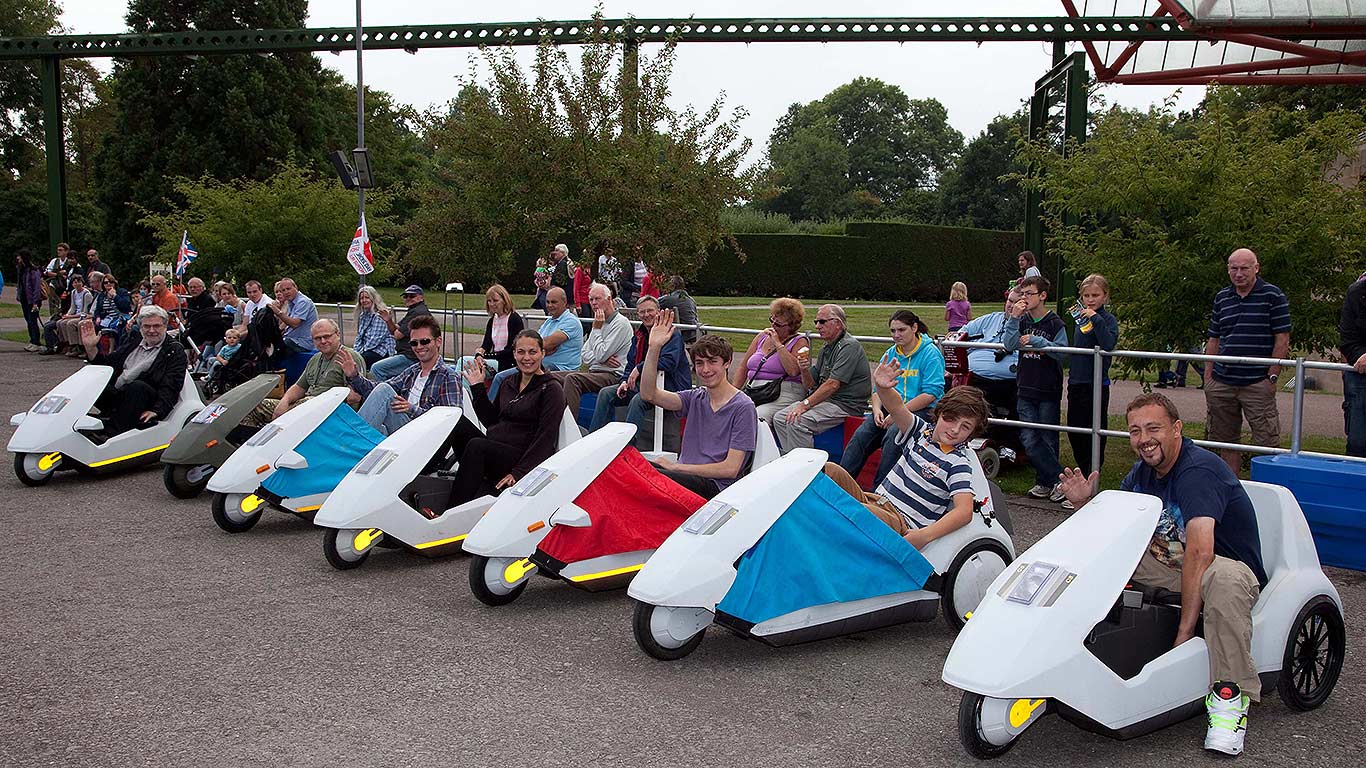
The C5 was the product of a man with the means believing deeply in the wrong idea. No more than rudimentary market research would have revealed the C5’s flaws and near uselessness in the harsh environment of a late 20th century UK road network.
Its vulnerability made a superbike look safe. But perhaps the most powerful killer of C5 sales was that you looked an idiot when driving it. And cars – or bikes – that humiliate their users make for a hard, hard sell.
Some might say that the C5 was ahead of its time, but it’s doubtful that a tricycle travelling at snail-speed in the company of articulated lorries would be allowed on the road today. It would face the same construction and practical troubles impeding the decidedly more brilliant Segway, which isn’t allowed on the road either, but has many more uses.
Curiously, one of those has been spotted providing ‘safari’ rides in the grounds of Alexandra Palace.
ALSO READ:
Great Motoring Disasters: Cadillac Allante
Classic Golf GTIs: driving Volkswagen’s hot hatch icons
Lancia Thema 8.32: the sensible saloon with a Ferrari engine


